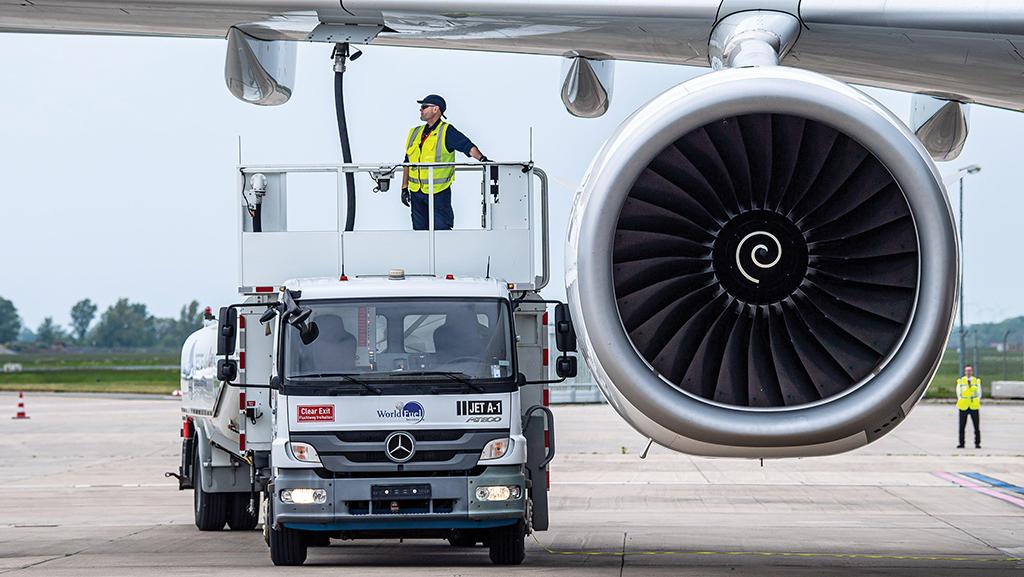Opinion: The Plain Truth About Aviation’s 2050 Sustainability Goals

During the recent International Air Transport Association’s World Air Transport Summit in Istanbul, Akbar Al Baker, CEO of Qatar Airways, described the airline industry’s emissions goals as “a PR exercise,” saying the industry will miss its carbon-reduction targets in 2030 and net-zero goals in 2050. The association’s director general, Willie Walsh, refused to accept this characterization but emphasized that reaching the targets will not be easy or cheap.
It is time to speak some truth. The airplanes being manufactured today—not powered by 100% sustainable aviation fuel (SAF), hydrogen or all-electric engines—likely will be flying for the next 20 years or more. Aviation is a “hard-to-abate” industry. The unfortunate reality is that current pathways to fulfill the aviation industry’s aspirational goal of net-zero greenhouse gas emissions by 2050 are narrow and unclear. Yet global warming continues, with dire warnings and increasing impatience. The World Economic Forum’s Clean Skies for Tomorrow initiative expresses optimism that the industry can reach its net-zero goals. But we need a lot more to increase SAF production as well as new R&D efforts focused on hydrogen, ammonia and battery design.
Just more than six decades ago, then-President John F. Kennedy said: “We choose to go to the Moon in this decade and do the other things, not because they are easy, but because they are hard.” He promised to put a man on the Moon before the end of the 1960s. Eight years later, the Apollo 11 crew landed on the lunar surface. For aviation to achieve net-zero carbon emissions, we need nothing short of a new Apollo project to address the industry’s impact on climate change.
The aviation industry does not need unrealistic mandates. Cutting flights, imposing carbon taxes on an already overtaxed industry or applying emissions trading schemes extraterritorially do not make sense. Aviation is simply too important to world trade—connecting cultures and lifting people out of poverty—to use such blunt instruments.
The industry needs huge government investment and tax incentives, with the U.S. Inflation Reduction Act serving as a useful road map, while employing an all-of-the-above approach to innovation in seeking alternatives to stop our reliance on fossil fuels. In the meantime, the aviation industry needs to brace for impact: more enforcement, litigation and misguided rules.
Aviation is in the crosshairs. Consumer groups want to “ban altogether” aviation’s claims about being “climate-positive” or “climate-neutral.” Advertising watchdogs are going after airlines that say they “fly sustainably,” “connect the world and protect the future” or “take a louder, bolder approach to sustainable aviation.” Environmental and consumer groups are filing suit in Amsterdam and California to attack airline goals to “fly responsibly” or become “carbon-neutral.” “The only manner to fly sustainably is to not fly or to fly less,” they say. They accuse airlines of “greenwashing”—making environmental claims that cannot be substantiated.
It is time for risk management to temper marketing enthusiasm. Airlines should be justifiably proud, yet realistic, in touting their sustainability efforts. Document them. Take credit for them. Do more. It is the right thing to do.
The industry also needs to match aspiration with reality. It needs to fulfill commitments with technologically feasible, economically affordable mechanisms in a measurable, transparent, verifiable way. Do not make promises that cannot be kept or claims that cannot be supported. Be careful—be very careful—in asserting that you are “greener” than your competitors. But do not allow agencies, plaintiffs or environmental groups to force airlines into “green hushing,” trying to force the airline industry not to tout its many responsible, expensive efforts to become carbon-neutral.
The aviation sector is responsibly pursuing a basket of decarbonization measures to demonstrate its commitment to sustainability, including fleet renewal, improved air traffic management, SAF, electric aircraft and vehicles, ammonia, carbon capture and alternative hydrogen propulsion. Net-zero emissions by 2050 may well be achievable, but meeting that target will require more cooperation and massive government investment. The oil and gas industry can do its part, too. In the meantime, airlines should be wary of litigation, enforcement and radical proposals to cut flights.
Five decades after humans last stepped on the Moon, the Artemis program launched a rocket taller than the Statue of Liberty. Men and women will return to the Moon for a new era of scientific discovery. The aviation industry needs its own moonshot to combat climate change. It will be hard, but it can be done.
Kenneth P. Quinn is a partner at Clyde & Co. and general counsel to the Flight Safety Foundation. He previously was FAA chief counsel and counselor to the U.S. transportation secretary.
The views expressed are not necessarily those of Aviation Week.




